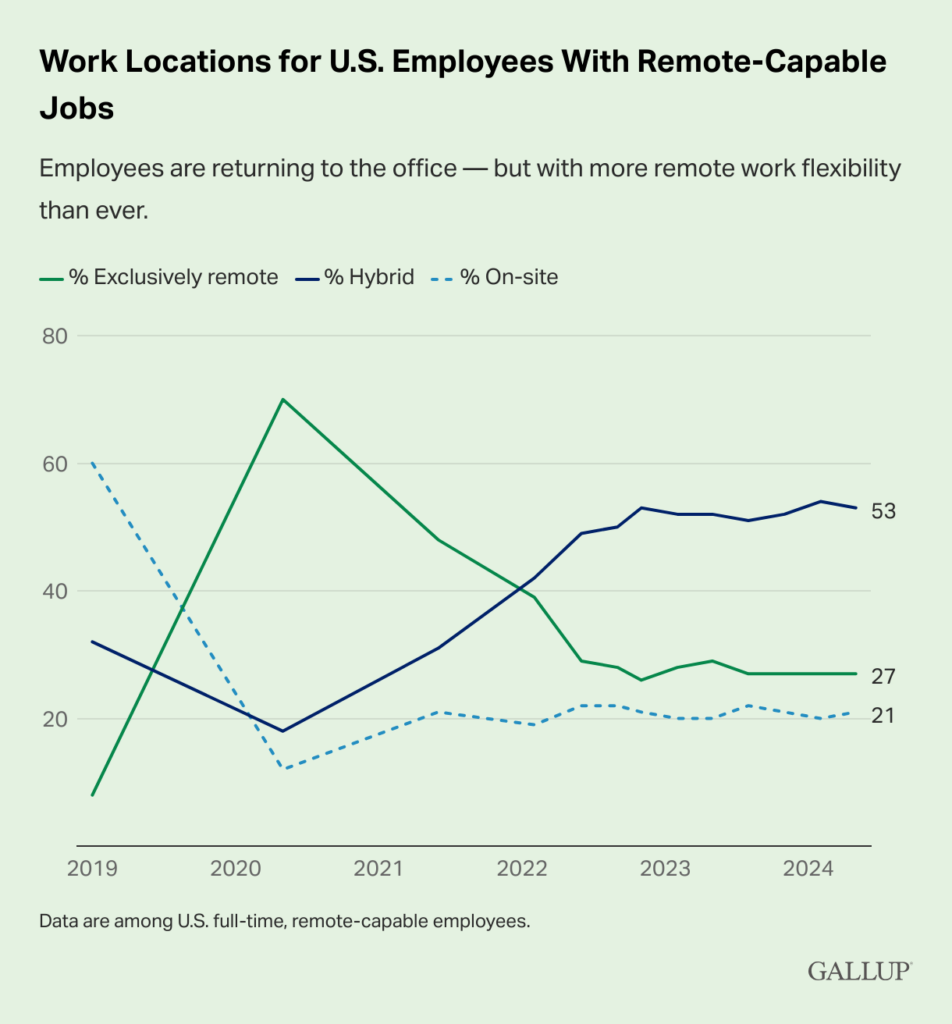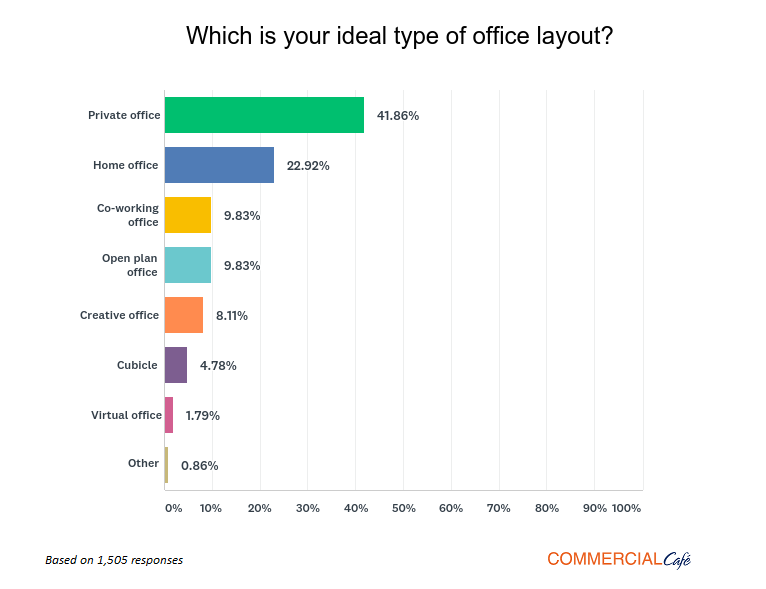Return to Office Strategy: Tips for Success

Imagine the office scenario ten years back. A request to work from home would seem ridiculous.
One pandemic later, things changed. But as the Public Health Emergency period ended, the idea of returning to office is back on the table. But the allure of working from home remains strong.
With many organizations focusing back on the return-to-office strategy, wide-scale remote work is fading out slowly but steadily. As the debate gains momentum, a hybrid work schedule is emerging as the new compromise.
As humans, we tend to seek comfort in familiar routines. Changes generate resistance. So, the question is, how to implement this old-but-new work policy effectively and meet employee and business goals? This complex process needs to be finely balanced so that you do not risk losing valuable workers. Getting the strategy right involves considering multiple variables which we will discuss in the following sections.
Assessing the Current Work Environment
With technology making remote work possible, a large percentage of the global workforce shifted to work from home (WFH). If permanent, such a shift can have major implications in multiple areas.
These include urban infrastructure development, workspace design, and reallocation of investment to residential areas. Plus, how businesses manage their workforce will also change.
At present, limited data is available on how WFH impacts productivity. To make things more confusing, the available data is contradictory and often supports both sides of the debate. In reality, the effect can vary across different industries. For some industries, teleworking can be easily implemented making it less challenging for employees. That might not be the case for others.
For any employee, the biggest advantage of remote work is flexibility. One report mentioned 29% higher productivity for workers with full schedule flexibility. Plus, they have a significantly higher ability to focus on their work.
Perhaps unsurprisingly, a large section of the workforce is willing to take a pay cut in return for remote work. Most employees find that WFH allows them to find a better balance between office and personal life. However, the managers may think differently. A survey by Microsoft mentions that 49% of managers find it hard to trust that hybrid workers are delivering the best. The point is that control and accountability matter for managers.
Even CEOs feel that remote work affects employee collaboration and engagement. For them, a 9-to-5 office schedule is an integral part of corporate culture.
If you think about it, managing people is easier when the entire team is together in one place. Then again, some research has pointed out that remote work can lead to 10% to 20% lower productivity – a big blow for WFH advocates.
No wonder one report mentions that by the end of 2024, 90% of companies will go back to in-office schedules. Another problem for workers is that the remote work options are drying up. For the few available options, the competition is too high. That being said, forcing people back to work can be a bad call for any business. Not only can it destabilize the workforce but can also damage employee morale.
This is where business leaders have to be thoughtful. They should listen to employee preferences and understand what they need. A one-size-fits-all approach can be counterproductive.
An effective return to the workplace strategy gives employees time to make the transition. It motivates them to return to the office instead of making it seem like a strict mandate.
Defining the Return to Office Objectives
Clearly, when it comes to returning to office, the thought process of leadership differs from that of employees. Managing this difference requires the leadership to demonstrate empathy and understanding.
Transparent reasoning is the best way to make the employees adapt to the change. One way of doing that is to show them how returning to the office can deliver better outcomes and positively affect the overall business strategy.
Suppose a business has the objective of delivering world-class engineering solutions to its customers. For that, employees sitting together face-to-face can result in better productivity through brainstorming and idea-sharing.
A big plus of WFH is more time for family and hobbies. By cutting down the time for getting ready for the office and fighting traffic, employees had more free time in their hands. This makes it important to remain flexible and offer hybrid work options in the new scenario.
Balancing the advantages of in-office work with employee needs and providing support wherever needed is the right way to act. One way is to launch special employee assistance or professional development programs. Think of providing incentives to ease the transition. This can be actual payments or benefits like free meals and fitness programs.
Besides, some employees may still have doubts about the safety aspects of returning to the office. To address such concerns, it is important to establish in-office health and safety protocols.
Developing a Flexible RTO Plan
No matter the work model you choose, there are pros and cons to each. Honestly, not an easy choice to make. The best way forward is to consider the goals of the business as well as the personal and professional goals of the employees.
The advantages of working from the office include face-to-face communication and better collaboration. For many employees, reconnecting and interacting with colleagues is an important aspect of socialization. This builds a sense of workplace community. For managers, monitoring progress becomes easier. Plus, greener workers can perform better under the direct guidance of their mentors.
A major downside of heading to the office is the time lost while commuting. Data suggests that Americans gained an incredible 60 million hours by avoiding commuting to the office.

Gallup research also shows us that hybrid work models are becoming more and more popular. This is because working from the office can create more distractions for some employees. In addition, there is also the issue of remote work attachment. Some employees are ready to quit rather than give up the advantage of flexibility.
Considering these, a hybrid work model seems to offer the best of both worlds. It offers more flexibility and a better balance between work and home life. Employees enjoy their personal time while having the chance to engage in those informal but important “water cooler conversations” as well.
While that sounds good in theory, the frequent shifts in the work atmosphere can hurt productivity. There is a chance that overworking can invade the hybrid work model. Also, the company needs efficient managers and HR teams to manage a hybrid working team efficiently.
When developing a hybrid work model, it is important to set clear boundaries. When employees return, they should not be overwhelmed by the set routine. To start with, it is important to clearly define the number of days in a week that an employee has to be present in the office.
A consequence of WFH practices is the blurring of boundaries between work and personal life. Setting distinct start and finish times for workdays will help define work boundaries.
So, how are the top companies implementing the change?
Most businesses are adapting their work model as per their unique requirements. Amazon has implemented a hybrid work model making work from the office compulsory for at least three days a week. For Goldman Sachs, working in the office is a priority. However, employees can request flexible work arrangements as needed.
Communication and Change Management
At all times, building trust is the key to ensuring a smooth return to the office. Communication plays a crucial role in supporting and guiding employees during this period of transition. All communication should be from the top down to support the people managers at the ground level.
Most of all, the strategy should not be dictated from behind the closed doors of executive offices. Consider Inputs from the employees and take steps to address their concerns.
Think about this. The level of flexibility offered fails to meet employee expectations. What then?
In such scenarios, it is important to listen to their concerns with empathy. Meetings, suggestion boxes, and surveys are some ways of gathering feedback, both positive and negative. By implementing feedback, the management can present a collaborative approach.
Employees should be kept informed and the tone of all messaging should be empathetic. A contact point should be set to answer any queries. Remember, an early identification of potential issues will help minimize disruptions and resistance to the change.
Workplace Safety and Health Protocols
The post-pandemic workplace requires a reevaluation of the indoor work environment. For this, improving occupational safety and ensuring that employee health is not compromised at any point is essential. Start with a risk assessment and develop a plan for emergency response.
To begin with, upgrade the ventilation and air filtration process of the workspace. This involves renovating the ventilation systems and assuring employees that pollution sources are being cut off. Using air purifiers and UV-based purification tools can help.
Likewise, frequent cleaning and disinfection protocols should be implemented; especially for high-touch surfaces. Other steps include employee health screening and creating exceptions for workers with specific health issues.
Pay attention to local laws regarding vaccination requirements. Wherever applicable, follow the Returning to Work guidelines by the Occupational Safety and Health Administration (OSHA).
With hybrid work models, developing a “psychologically safe” work environment is important. Such a workplace offers a comfortable working space where employees can freely exchange ideas and take risks without fear. Not only does this help in building employee well-being, but also promotes engagement and productivity.
Redesigning the Workplace
Post-pandemic office design needs to incorporate the concepts of a hybrid work model and look beyond traditional ideas. This allows employees to have greater flexibility by balancing work with personal commitments.
The best design is one that allows employees to work individually, as well as get together seamlessly as a team. Space planning is needed to reduce density and create an inviting space for people. The idea is to maximize space by creating an exciting floor plan based on the activities performed in the zone.
Take a closer look at organizational behavior and how these spaces interact with each other. Based on that the layout can have interlocking spaces, adjacent spaces, or a space within a space. Employees should be able to move through these spaces while maintaining the need for physical distancing.

Again, there is no fixed design for a hybrid workplace. It depends on your unique requirements and goals as an organization. Some offices may need more collaborative spaces where people can work together. Others may prefer enclosed spaces for high-concentration tasks. Beyond that, there can be project “war rooms” and communal spaces.
In fact, a survey done by Commercial Cafe contradicts common beliefs that an open floorplan office is the prefered option. The reality is, employees want options. For instance, consider Deutsche Bank. Focusing on the concept of “work isn’t only about the desk”, it has designed its new office based on a flexible work culture. The spacious office includes health and wellness facilities, multiple food courts, dining areas, bars, and mother’s rooms.
Most importantly, you need to sharpen and refine your key IT systems to accommodate hybrid work. This includes incorporating tools for better communication and implementing flexible cloud computing applications for easy data access.
That brings about another challenge – ensuring cyber security and data privacy in the new environment. With cloud-based solutions, the data is more vulnerable and prone to attacks. While implementing robust security solutions is paramount, you need to educate the employees on cyber safety as well.
Are You Moving a Single Employee Back to the Office? Save Time and Money With the Agoyu Moving App Platform!
Supporting Employee Transition Back to Office
Here is the truth: do not expect the vast majority of the workforce to be cheering when you announce the return to the workplace strategy.
Accept that not all the factors are in your control. Nevertheless, as a leader, there are some steps you can take to ease the process for them.
One way to ease the process is by implementing mental health and well-being initiatives. Offering tailored support to employees with caregiving responsibilities and special mental health needs will help in creating an inclusive strategy. Since sticking to a rigid office schedule can be stressful for some employees, promote flexible working hours.
After prolonged remote work, reintegrating socially with colleagues can be a challenge for many. Plan in-person interactions and team-building exercises to make the process easier. In addition, provide the necessary training to help employees use the new tools required in hybrid environments more effectively.
For some employees, getting back to the office can mean relocating to another state. In some cases, employees may need to move for international assignments. Offering relocation packages and additional incentives can help motivate them to make the move. Plus, it shows that the company cares for the employees, which in turn helps in retaining top talent.
Monitoring and Adapting the RTO Strategy
If there is one thing that fostering a smooth return to office strategy needs, it is active listening. Make the strategy more effective by gathering insights and adapting to match employee needs. Review the policy periodically to identify any shortcomings, evaluate effectiveness, and make the necessary adjustments.
Think of considering what the employees do not enjoy about the strategy. If these aspects are not mission-critical and in your control, changes can be made keeping the long-term success plans in mind. This can help bridge the gap between organizational and individual needs.
Sure, setting clear and realistic objectives is important. But, fixing a rigid timeline for the transformation may not help you achieve the right balance between office and hybrid work. Going slow can be the best option to assist the employees get used to the new routine.
5 Essential Factors of Return to Work Strategy
Employing a thorough and evidence-driven return to office strategy requires you to be creative and patient. Keeping these 5 factors in mind will help you avoid generating undue hardship for the employees.
1. Gather Information
Create surveys and focus groups to learn the employee perspective about returning to the office. The data will work as a foundation and help you in informed decision-making. Use focus groups to dig deeper into the data and understand employee motivations.
2. Mitigate Legal Risks
Keep in mind the two federal laws – the Americans with Disabilities Act (ADA) and the Family and Medical Leave Act (FMLA). You need to make reasonable accommodations for employees with a disability as per the ADA. According to the FMLA, employees should return to the same or an equivalent working position when they come back to the office.
3. Avoid Workforce Discrimination
Make sure that there is no discrimination between employees in a flexible setup based on their physical presence in the office. Consider how the performance and productivity appraisal can be modified to ensure that it is not tilted toward employees with more office presence.
4. Maintain a Positive Culture
No one enjoys working in a gloomy setting that is devoid of fun. Bring back the company events and celebrations that stopped when remote work began. Add some humor to the setting to boost the spirits and relieve any tension. Remind the employees of the fun they missed by planning team lunches, and cultural activities.
5. Look at the Diverse Picture
The issue of return to office has multiple perspectives ranging from employee recruitment, retention, and engagement. Then again, the flexibility needs of the Gen Z employees will differ from those of the mid-career talent. Managing diverse stakeholder groups requires respecting each employee and understanding their unique needs.
Final Thoughts
Heading back to the office and embracing the idea of working together, and apart, has its challenges. But it need not be overwhelming for the management and employees.
A post-pandemic workplace needs to offer a great experience to attract employees. To make the return to the workplace strategy work, laying the groundwork by respecting employee requirements is essential. Remember, cooking up the perfect recipe for the office return needs careful deliberation and planning. Rushed decisions can be a recipe for disaster.
To ensure a smooth transition for your workforce and frame the perfect relocation package for the employees, meet the ARC Relocation team. Being a global relocation company, we can support your return to office strategy through our expert relocation management services. Our team understands the needs of each client and delivers tech-driven relocation assistance with a steadfast commitment to customer service.
Initially, the process may seem like a tough hurdle. But when you consider the long-term benefits related to productivity and employee well-being, it is one that you need to cross. Last but not least, be prepared to face further changes in the future.
